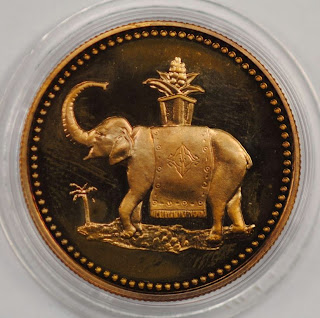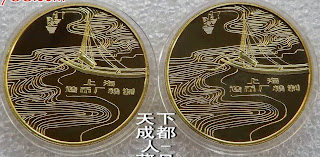1. Cultural Background
It may be strange to anyone outside the Chinese culture that Bai Wenjun would group these four plants in a set. But these have been known since ancient China as Four Nobles among plants, each with its own distinctive characteristics, or "virtues" as seen by ancient Chinese scholars. They have been the favorite topics of artistic creation. Numerous poems and paintings on the Four Nobles have been created.
Plum is actually a misnomer, or mistranslation. Plum (Prunus salicina) is a plant that flowers in early spring and produces sweet fruit. The plant in question ranking among the Four Nobles should be Winter Sweet (Chimonanthus) native to China. It flowers in winter, giving out strong fragrance, under snow and frost:
It is this unique feature that won the admiration of ancient Chinese scholars. It is seen as a symbol of thriving in an adverse environment, an inspiration for those who find themselves in difficulty but nevertheless hope for reverse of their fate through perseverance. Also, Winter Sweet flowers bloom ahead of other flowers, making it a harbinger for the approaching spring. To make this point, Bai Wenjun added the line 梅破知春近 (splitting of winter sweet flower buds ushers in spring) to the design. Here is a traditional Chinese painting of Winter Sweet in Snow:
The Chinese character for plum/winter sweet, 梅 ("mei" in Chinese Pinyin), is a favorite name of females in China. The wife of Claire Lee Chennault, the commander of the Flying Tigers, was Chen Xiangmei, or chen (family name) – fragrant - plum/winter sweet flower.
Orchid is very fragrant, too. Yet it ranks among the Four Nobles not just because of its fragrance, but also because of its locale. Often, orchids are found in remote mountainous areas, sending out fragrance all by themselves, without concerns about attention from anyone else. It symbolizes independent character, and indifference to worldly hubbub. In fact the Chinese translation for Road to Heaven - Encounters with Chinese Hermits by Bill Porter means "Serene Orchids in a Hollow Valley." Historically, many high court officials saw ups and downs of their own fate. When they were banished from the court, they became hermits, or orchids in the mountains, remote from the power center, but with no less virtue. Bai Wenjun added the line 只留清香满乾坤 (Leave everlasting delicate fragrance all over the universe) to the design. A Chinese can fill in the first half of the sentence, which would be "However fate treats one."
The Chinese character for orchid, 兰 ("lan" in Chinese Pinyin), is another frequent character adopted in female Chinese names. The former Labor Department Secretary Elaine Chao's Chinese name is Zhao Xiaolan, or zhao (family name) – little – orchid.
Bamboo has been admired for its uprightness. It does not bend; it does not branch, going straight up, standing firm in storms and snow. It embodies the character of integrity. Lines from the famous Chinese poet Su Shi best express this admiration for bamboo: "I'd rather eat without meat, than to live without bamboo around. Eating without meat makes one physically thin, but living without bamboo around makes one morally low." These lines are known to all educated Chinese.
Chrysanthemum was picked because of its blossom season. Unlike most flowers, it blossoms in fall. Instead of competing with other flowers in spring, it leaves the glory to others in season, and contributes its share when other flowers have had their best day. On the medal Bai Wenjun left these characters: 秋日胜春朝 (a day in fall outshines a spring morning), to make this point. Color-wise, instead of being loud and noisy, chrysanthemum is pure and serene, adding simplicity to its modesty. Yet it is a fighter, too. It shows off its colors proudly in late fall against the attack of early frost. It is worth noting that the Japanese royal family adopted chrysanthemum as their symbol, although this flower was not even native to Japan. Needless to say, chrysanthemum is also a character adopted in Chinese names, mostly female names.
The reverse of the POBC set is a sharp contrast to the spirit represented by the Four Nobles. To this side, Bai Wenjun added the favorite themes of the common folks in everyday life: blessing in life, fortune, martial happiness and longevity. For lack of better designs or shortage of time, Bai only engraved the characters 禄 (fortune) and the exaggerated form of 寿 (longevity) on the medals with some shapes around.
Shapes around 禄 are typical decorative ones. But those around the character 寿 (longevity) are actually bats. Unlike Westerners who see bats in a negative light, the Chinese often add bats to designs of happiness and longevity, because its name is a homophone to the Chinese character meaning happiness/blessing. The reverse of the God of Longevity also features the bat shapes:
Blessing in life is represented by two fish jumping out of water. It is taken from the story of carps jumping over rapids/water falls in a location called Longmen (dragon gate), to turn into dragons and fly away. It is a metaphor for change of one's life for the better through hard work.
Here is a Chinese painting of the same theme:
Marital happiness is symbolized by two duck-like water birds, which the Chinese call Yuanyang. They are said to be extremely loyal to each other. Once they mate, they are never separated.
The double happiness character (囍) in the middle is typically used for the new weds. As if these marital symbols were not enough, some outlines of lotus flowers were added. Twin lotus flowers on the same stalk are often compared to a devoted couple:
Of course, the heart shape won't escape anyone's attention either. The crowded symbols of happy marriage seem overdone, in sharp contrast to the simplicity and elegance of the design on the obverse.
There is no logical explanation why such worldly themes were added to a set featuring the Four Nobles. Probably Bai Wenjun was playing safe, to appeal to both the intellectuals and common folks to ensure good sales. Yet the set is known as the Four Nobles. There are other medals for longevity, fortune, marital happiness and blessing in life. But this is the only set dedicated to the four plants.
2. The Style of the Design
Bai Wenjun followed the style of Chinese painting in designing this medal set. Here is a comparison of Bai's Bamboo with a traditional Chinese painting:
Similarity between his Orchid and orchids in traditional Chinese painting is obvious, too:
3. Versions of the Set
The POBC set was first released in brass in 1981. It was restruck later, presumably in the 1990's, in brass as well as in gilt brass. The good news is that at the moment, there has been little research on the differences between the original strike and the restrikes. It means that unlike brass pagodas, which saw a more than 100% price gap between the original strike and the restrikes, the original strike of POBC can still be obtained at a relatively cheap price.
The original strike presumably was packaged in long wooden boxes, similar to those housing pagodas and goldfish:
The flower shape on one of the boxes indicates the Four Nobles set. On another type of long box are the Chinese characters 中国名花 (best known Chinese flowers):
But boxes are not 100% reliable for distinguishing the different strikes, for two reasons. First, it appears that Shanghai Mint did not use up all the boxes for the initial release in the early 1980's. Some such boxes were still available in the 1990's. Second, empty boxes can be filled with restrikes.
Typical packaging of the restrikes includes two types of boxes:
The square box and the plastic panel are generic boxes, with no indication of what medals are inside. The color of the filler inside the plastic panel can be either red or green.
There is even gift packaging. The following sets were gifts from the Shandong Branch of the People's Bank of China:
Gilt sets are found in those boxes, as well as in special boxes customized for the set. On the square box the name of the medal set is specified:
On the long box are Chinese characters 中国名花 (best known Chinese flowers).
These boxes look a lot newer than the boxes from the early 1980's.
Lastly, there are screens embedded with the brass or gilt brass set, presumably made in the 1990's:
Images of the Four Nobles are painted on the screens to match the medals. The other side, however, is blank.
More research is on-going to tell the original strike from the restrikes. In the meantime, enjoy the superb hand-engraved art with strong Chinese themes, whether such themes are elevated/lofty or worldly and close to life.



























































